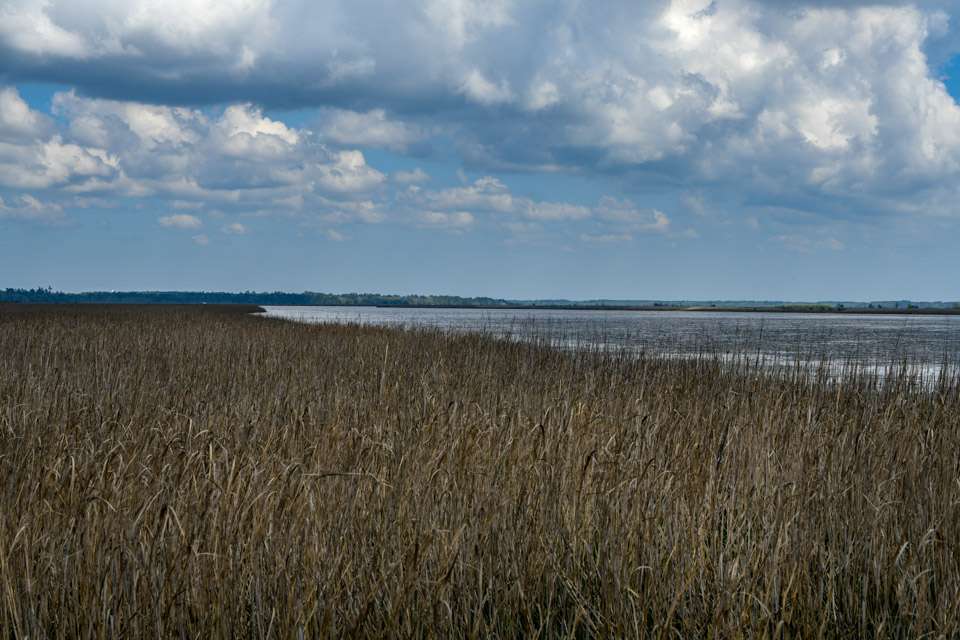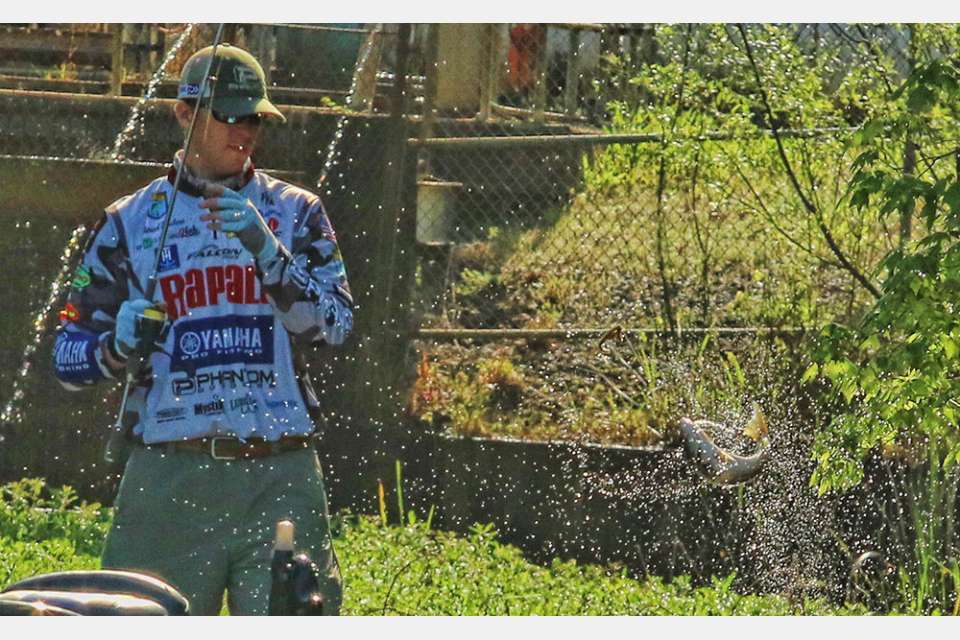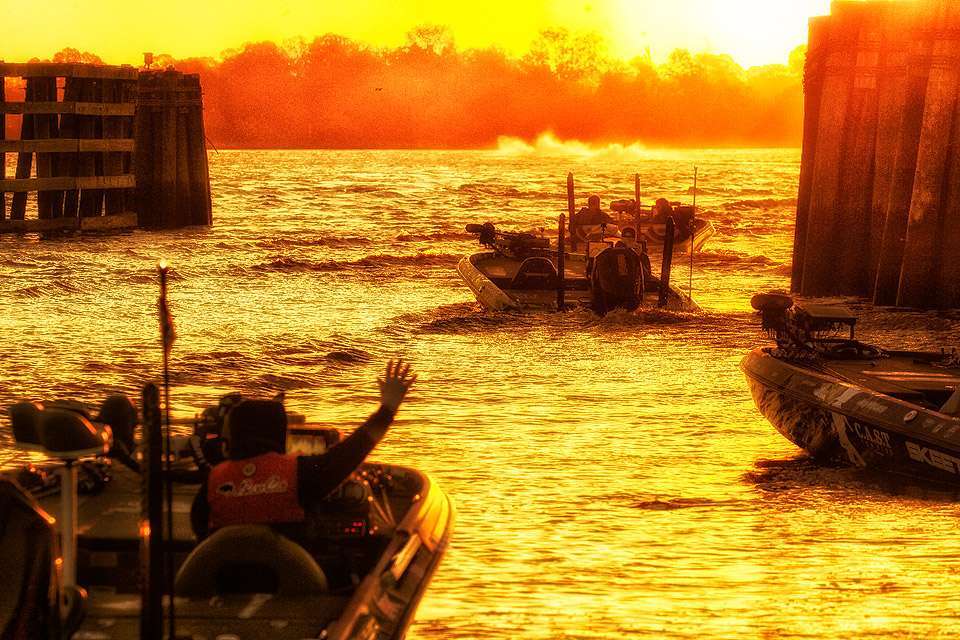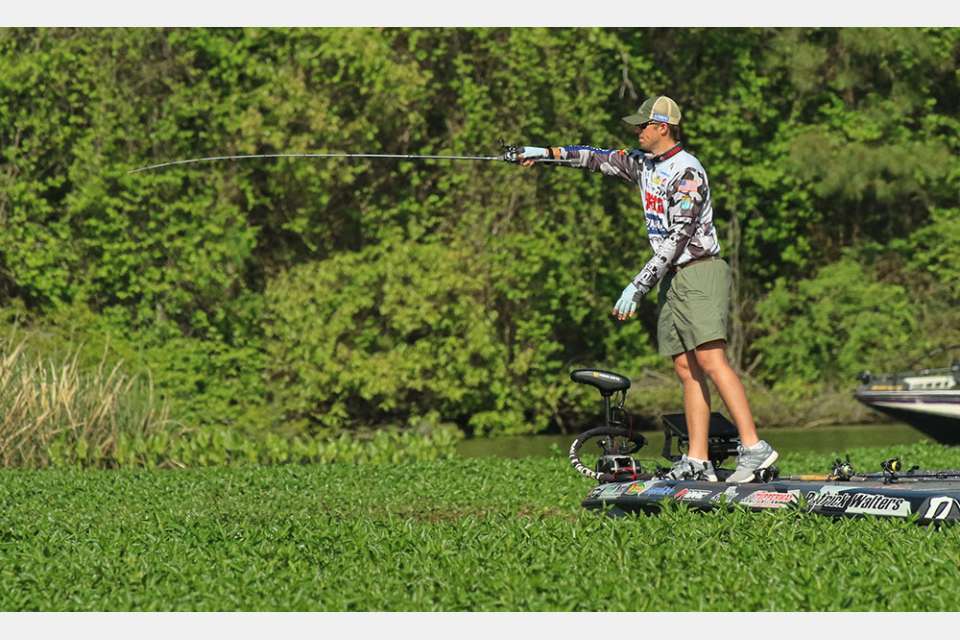
Bass are bass wherever they roam, but tidal fisheries have different rules for key parts of the game. Compared to the reservoirs and natural lakes that dominate the mainstream bass scene, waters ruled by the ocean’s influence can appear daunting, but Elite newcomer Patrick Walters said that needn’t be so.
“There’s nothing confusing about a tidal fishery; it’s as straightforward as it can possibly get,” Walters said. “It’s a 6-hour tide, a 50-minute slack tide and every day, (the schedule) will be about an hour difference. In two weeks, you’ll have the exact same tide that you had, because it flip flops (based on moon cycles).
“At times, tides make it more predictable because I know I’m going to catch them during this hour, but it’s frustrating because I’m not going to be able to catch them for the next five hours. Tidal influence might shuffle the deck for anglers who are unfamiliar with it, but there have been tidal fisheries longer than there have been these natural lakes and reservoirs that we fish.”
Born and raised in Summerville, S.C., about 20 miles inland from Charleston, Walters’ keen understanding of daily ebb and flow delivered a fourth-place finish at the 2019 season opener on Florida’s St. Johns River and a seventh place at South Carolina’s Winyah Bay — both prominent tidal fisheries. Enjoying a fantastic rookie season on the Elite Series, Walters offered a few pointers on productively working in a tidal environment.
The spawn
Bass living in tidal waters instinctively know how to select bedding sites that won’t be drained by a falling tide or deprived of the requisite sunlight during high water. Moreover, Walters said, the fish must be mindful of the water flow that will accelerate multiple times in a day.
“You have to find some slack water,” he stresses. “The fish aren’t going to spawn on the main river; they’re going to find areas where the water slows down, so they can make a bed without the current ripping overtop of them.”

Current breakers like vegetation, wood or prominent rocks create ideal bedding spots for tidal bass.
“They’re going to spawn on a piece of hard cover, but it’s going to be in an area where their eggs can hatch and the fry won’t get swept away by the current instantly,” he said.
As for timing, he makes this observation: “If you have a lake or reservoir near to a tidal fishery — like Santee-Cooper, which is connected to the Cooper River — the fish are going to spawn in the lake before they spawn in the tidal fishery. They’re going to be two to three weeks to a month behind the fish in the lake because they have to wait for all the elements to become more stable. In the lake, they might spawn when the water’s in the 60s, while in the tidal fishery, it might have to get into the low 70s.”
Postspawn
While males still keep watch over their young in tidal waters, he finds the traditional “fry guarder” pattern less prominent. For one thing, such waters often are stained, so spotting clouds of fry may be tougher than it would be in still lake water. Also, Walters said rising tides will push fry into shoreline vegetation where they’re even harder to see.
Best bet, he said is to fish likely areas with moving baits that are likely to scatter the fry and identify active zones for targeted presentations.
Distant relationships
Consider that running with a tide boosts your speed and improves fuel consumption, while running into the moving water slows you down and burns more fuel. Such were the daily calculations for Walters and several others who made the 100-mile run from Winyah Bay, through Charleston Harbor and into the fertile Cooper River.

“If you’re going to be making long runs in a tournament, do your research and make a trial run or two before,” he said. “It’s worth it to know where you’re going and how to run it. You want to find your fuel stops and calculate everything so there’s no question and you’re leaving all your time for fishing.”
Navigation
The same wisdom applies to depth awareness — perhaps, the more formidable of tidal factors. Stay in the channel, even if you think you know the area and if you venture beyond the markers, go slow till you know.
“Learn the area’s tide swing (how far it rises and falls),” he advises. “Here, in Charleston, we have a 6-foot tide, but if you go to areas of North Carolina, they have a 1-foot tide. Know how much it’s going to fluctuate, so you know if you’re going to lose 3 feet or 4 feet of water. An area that has 5 feet of water may be high and dry on low tide.”
To that point, he warns against running across unfamiliar flats. Finding a sunken barge or oyster bar the hard way means expensive repairs, while sticking your hull in oatmeal mud means waiting for the rising tide to loosen the grip.
Bait selection
Because tidal bass commonly encounter marine forage such as shrimp, crabs and needlefish, baits with corresponding colors often find willing takers. Beyond this, Walters finds that smaller baits worked from mid water column to the surface are most productive during the moving tides that stimulate feeding.

“Except for when you’re flipping matted vegetation, the lighter the weight the better for tidal water,” he said. “Unless it’s hard bottom, those fish aren’t eating too many things off the bottom.
“That’s why a Chatterbait, a wacky worm, a Speed Craw, a buzzbait — that kind of stuff excels in tidal fisheries because the fish are suspended in the water column behind a piece of cover, looking up and catching things flowing by with the current.”
Parting tip
What’s the biggest mistake tidal neophytes make? Walters points to rigidity; riding the same pattern in the same area for too long. Say your red hot flipping bite fizzles; on a reservoir lake, you may be tempted to wait them out, maybe try different baits or colors. Well, on a tidal fishery, the bite probably stopped because the fish relocated.
“You might stay on a pattern all day, when it’s only good for three hours,” he said. “Sometimes, you have to adjust and follow the fish out and change your approach. In tidal fisheries, fish are constantly moving and being able to stay with the fish is the biggest thing.”





